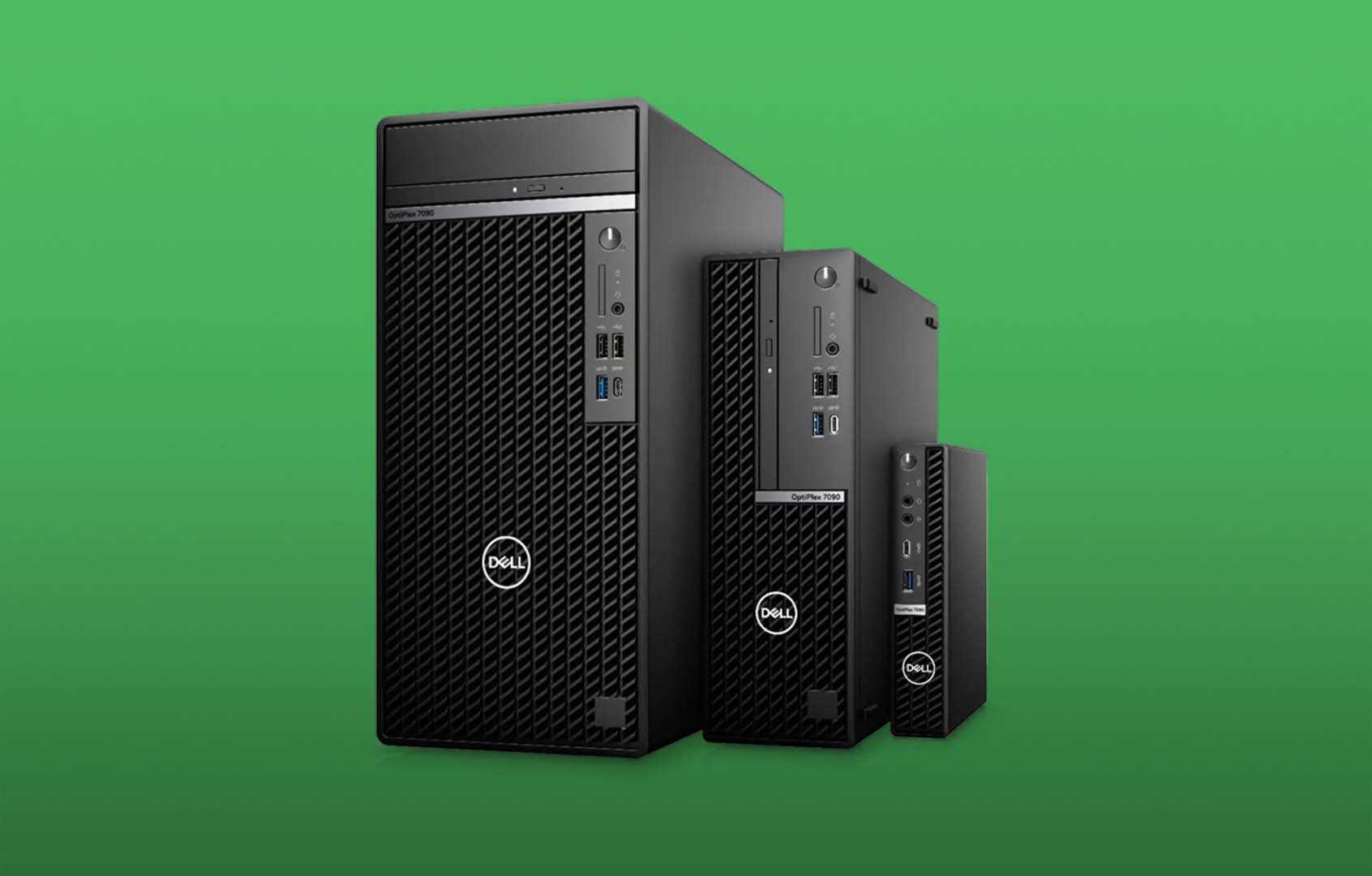Save up to 15%
Save up to 15%

Buying a new computer presents you with seemingly endless options. You need to pick a manufacturer, make sure it has all the right specs, and decide if you want a new or refurbished computer.
Well, there’s one more decision you need to consider before making your purchase: form factor.
The form factor of your future computer dictates the shape and size of the machine as well as the hardware put to use within it. For example, a graphics card intended for a standard desktop likely won’t work in an ultra small desktop. Different form factors require unique hardware components, for the most part. This impacts their usability, making picking the right form factor crucial.
Picking the right form factor depends partially on how you’ll use the computer and partially on size preference. Yet, exploring the different non-standard form factors can be confusing, as many manufacturers use these terms interchangeably or have their own marketable terms.
It’s time to hone in on the true definition of each form factor and discuss the pros and cons of each. Read on to discover which of these smaller form factors might be right for you.
Generally speaking, a microtower PC is larger than small form factors (SFFs) and ultra-small form factors (USFFs). A microtower is designed to stand upright similar to a standard desktop. Conversely, SFFs and USFFs are designed to lay flat, similar to a gaming console. Some USFFs can even be mounted to the back of a monitor due to their flat design.
You may discover that the differences vary between manufacturers. The important thing to focus on is the overall size of the computer you’re considering along with its hardware specifications. Will it suit your needs?
A micro desktop is designed to have similar specs as a full-size desktop but in a smaller case. Many standard components will fit in a microtower and allow this form factor to be nearly as usable as a desktop computer. This form factor has actually become increasingly popular with PC builders as it can be just as powerful but in a smaller package.
Desktops advertising a small form factor (SFF) typically lay flat and are significantly smaller than micro towers or standard desktops. They’re still perfectly fine computers that can handle average computer use, which is why they’ve become common in corporate settings.
It’s worth noting that “SFF” is sometimes used to mean “Slim Form Factor.” Pay attention to how the acronym is used as a slim desktop is different from a small form factor desktop.
Sometimes called a mini desktop, USFF desktops are the smallest cousin in the form factor family. The small package can still handle most standard usage needs and is famous for its portability and mountability.
Do you need a hardcore gaming machine or video editing powerhouse? A microtower may be the best choice. Do you want to create a media center? You may want an SSF PC. Or do you just need something to handle normal computer usage? Explore the world of USFFs.
REFURB.io carries a wide variety of form factors to help you find the perfect PC. We are a Microsoft Authorized Refurbisher and our reconditioning process meets Microsoft’s strict requirements, plus ensures a genuine copy of Windows. Browse our desktop PCs today to find your next machine.{"one"=>"Select 2 or 3 items to compare", "other"=>"{{ count }} of 3 items selected"}